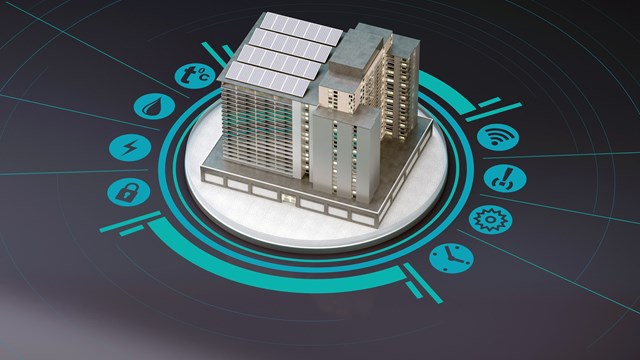
In residential properties, lighting – both its quality and its efficiency – is often as important as the fixtures in which bulbs themselves are placed. This applies particularly to LED light bulbs, since they’re directly tied to monthly energy costs that can impact your bottom line.
First, a quick introduction to LEDs: The acronym LED stands for ‘Light Emitting Diode,’ a semiconductor device that converts electricity into light. LEDs do this more efficiently than incandescent and even compact fluorescent (CFL) bulbs, producing more light with far less heat. The lack of heat emitted from an LED bulb is what sets it apart from an incandescent bulb. Heat shortens a bulb's lifespan, and since LEDs operate at lower temperatures, they last comparatively longer than old-fashioned bulbs.
Reasons to Switch
In addition to the potential 80% energy cost savings, here are five more reasons to consider switching your properties lighting to LEDs:
They Can Improve the Mood of Your Residents
Good lighting can create a sense of space and detail, and—if done well—enhance the quality of a setting or space. Good LED lighting can also accomplish these, but with additional unique psychological benefits for residents. Studies show that LED bulbs’ higher color temperature can elevate positive moods and improve performance. LEDs are also found to enable faster reaction times, reduce fatigue, lower depression rates, and even improve visual and cognitive tasks. Switching to LEDs means your residents may feel less stressed in their homes – and that's a good thing for everybody.
They Can Be Tailored to the Needs of Your Setting
From bulb shape and size, to brightness level and color hue, the options for LED lighting are as varied as your residents. Though it can be exhilarating to have so much selection, it may also feel overwhelming, My best advice, whether you’re installing LEDs on a new condo development, or retrofitting for an older co-op, is to assess your lighting choices one space or room at a time. The lighting for a small bathroom will be different from that of a large, open common room. Just by switching to LEDs, you’ll decrease your energy output and costs, so it’s best to take more time to customize the look to fit the space, which will make the switch to LED as seamless as changing a light bulb.
They Can Enhance Your Brand’s Eco-Friendly Currency
Aesthetics definitely matter, but the most compelling reason to switch to LED is to lower costs and consume less energy. The additional benefits may then include establishing and marketing your properties as a brand that supports sustainability. In 2015, Nielsen’s Global Corporate Sustainability Report indicated that 66 percent of consumers are willing to spend more on a product if it comes from a sustainable brand. This means that switching to LED, along with implementing other eco-friendly initiatives, could put your brand ahead of your competitors. Incorporating a sustainability business plan may also qualify your building or association for local green certifications, which could create additional marketing opportunities.
The Technology Continues to Improve
LED lighting is not a stagnant technology. It continues to evolve, much to the benefit of businesses still considering making the switch. In the relatively brief time that LEDs have been on the market, their overall performance has improved, with greater energy efficiency, longer lifetimes, and better color quality. And unlike many other technologies (hello, iPhone) these enhancements are lowering the costs, rather than raising them. Since 2008, prices for LED lightbulbs have dropped 90 percent, making LEDs one of the most accessible green technologies on the market. These enhancements have also allowed for LEDs with more distinctive features, such as Wi-Fi enabled lighting systems, and LEDs made from organic materials, known as OLEDs.
They Can Help You Save in the Short- and Long-Term
An ideal business investment provides both immediate as well as long-term return-on-investment (ROI). LED bulbs do just that. As LEDs become more ubiquitous, the price is decreasing compared to traditional bulbs. There are also various financial incentives and funding plans, either through companies that don’t require up-front installation fees, or via government subsidies, rebates, and tax credits, which incentivize the initial, short-term investment. The long-term ROI is based primarily on LEDs’ extended usage, as they last 25 times longer than incandescent lighting, therefore reducing the need for frequent replacement and overall spending on new bulbs.
For properties both large and small, the residents are a top priority, and lighting is an important factor in ensuring their satisfaction. If your properties can attain a strong aesthetic while also being energy efficient using LED lighting, your buildings will be ‘switched on’ to long-term success.
Matthew Lanfear is president and CEO of Great Eastern Energy, an energy supplier of electricity, natural gas and energy solutions in New York, New Jersey, and Masschusetts.






Leave a Comment